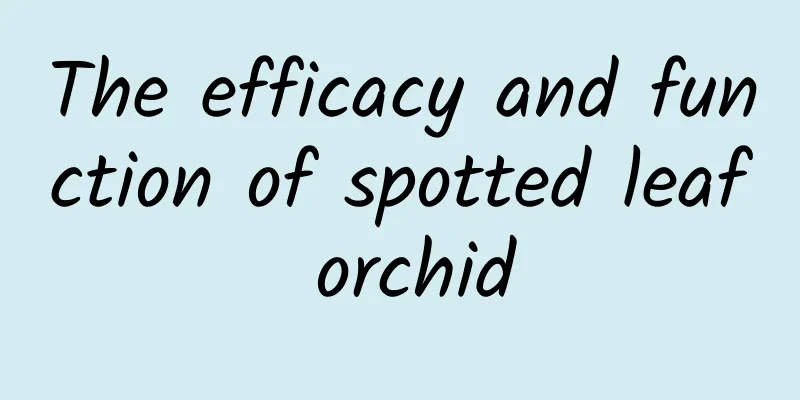What are the effects of branches?

|
Speaking of branches, I believe most people don’t know what they are. But if we talk about gardenia, then everyone will understand. Zhizi is another name for gardenia. As a traditional Chinese medicine, gardenia has the effects of clearing heat and detoxifying. In addition, it can also play a certain role in protecting and repairing liver function. In addition to this, what other effects does gardenia have? Let’s take a look at it below. Zhizi, also known as Gardenia, is a traditional Chinese medicine name. It is mainly used to treat: restlessness due to fever, red eyes due to liver fire, headache, jaundice due to damp heat, stranguria, bloody dysentery and hematuria, sores in the mouth and tongue, swelling and pus caused by sores, and swelling and pain caused by sprains. Effects on liver function 1. Effect on liver function: SD rats were divided into 4 groups; Group A was the control group; Group B was normal animals, which were gavaged with 2g of crude drug extract; Group C was animals with common bile duct ligation to induce hyperbilirubinemia; Group D was animals with hyperbilirubinemia, which were gavaged with 2g of crude drug branch extract. The experiment was used to measure liver Y protein, Z protein, BSP clearance, bilirubin and related enzymes. The experimental results show that: 1) The extract of the twig had no effect on the activity of alkaline phosphatase in animal serum and liver homogenate. Ligation of the common bile duct caused an almost two-fold increase in alkaline phosphatase activity. However, the branch extract had no effect on the elevated enzyme activity. 2) The extract of the twig had little effect on the activity of lactate dehydrogenase in the serum and liver of rats, and the fluctuations of enzyme activity in the four groups of animals were all within the normal range. 3) The extract of the twig had no effect on the serum GOT of normal animals. After ligation of the common bile duct, serum GOT increased 7-fold. The extract of the seed can significantly reduce the elevated enzyme by 40%. The GOT in the liver was relatively stable, and there was no significant change in the four groups of animals. 3) The extract of the twig had no effect on the enzyme activity of normal animals, but it could restore the elevated enzyme activity of animals with ligated common bile duct to normal. It can be considered that the extract of the twig did not increase the activity of UDP-GT. 4) The determination of liver UDP-glucose dehydrogenase showed that ligation of the common bile duct could reduce the enzyme activity, while the extract of the twigs could increase the enzyme activity of normal animals and also increase the reduced enzyme activity. 5) The extract of the branches can increase the amount of Y protein and Z protein in normal animals, but cannot increase the amount of Y protein and Z protein that has been reduced due to ligation of the common bile duct. This indicates that the anti-bilirubinemia effect of Trichosanthes has little to do with Y protein and Z protein. 6) After administration, animals were intravenously injected with BSP (2 g/100 g body weight) and the clearance of BSP in the blood and bile was measured. It was found that the time to reach the peak was correspondingly prolonged, indicating that the excretion of BSP from the liver was blocked. 8) Branches can reduce serum bilirubin levels, but have nothing to do with glucuronyl transferase. Therefore, it can be considered that the branch extract has no toxic effect on liver cells. The branch extract can reduce the serum bilirubin level of animals, but its jaundice-relieving mechanism is more complicated. It does not increase the activity of UDP-GT, nor does it increase the Y protein and B protein in the liver, nor does it increase the secretion of bile like Artemisia capillaris. 2. Protective effect of liver: 1) Giving ICR rats the extract of the twig in advance (24 or 48 hours before) can prevent fulminant hepatitis caused by galactosamine. 2) When experimental rats were given 50 mg/kg of α-naphthyl isothiocyanate, their serum bilirubin, serum alkaline phosphatase and alanine aminotransferase increased. If the crude extract of the branches was given daily (1.5 g/kg, oral, for 3 days), the serum bilirubin, alanine aminotransferase and alkaline phosphatase of rats poisoned by α-naphthyl isothiocyanate could be reduced. The ingredient glycoside extracted from the branches has the same effect. 3) Effects on the liver: Oral administration of 50 mg/kg crocin to rats for 8 days had no effect on liver function, but caused acute liver discoloration. Taking a high dose of 100 mg/kg for 2 weeks can cause liver damage and melanosis, but a low dose of 10 mg/kg for 40 days does not cause the above situation. The above liver damage and melanosis are completely reversible. Therefore, even at very high doses, saffron has minimal toxicity to rat livers. Such high doses are impossible for humans to take, so saffron is very safe as a food colorant. Effects on bile secretion Experiments on rats and rabbits have shown that the branches have a choleretic effect. Its alcohol extract, glycosides, crocin, etc. can increase bile secretion. Administration of 25 mg/kg of schizonepeta glycosides orally, intravenously or intraduodenally to rats caused an increase in bile secretion, which was most significant after intraduodenal administration, and was almost equivalent to the potency of sodium dehydrocholate. Effects on gastric juice secretion and gastrointestinal motility Intraduodenal administration of 25 mg/kg of strychnosyl glycoside can reduce gastric juice secretion, decrease total acidity, and increase pH value in pylorus-ligated rats, and its effect is equivalent to 1/5-1/10 of atropine sulfate. Intravenous injection of genipin and its aglycone (genipin) at doses of 100 mg/kg and 25 mg/kg, respectively, can inhibit spontaneous gastric motility and pilocarpine-induced gastric contraction in rats, but the effect is short-lived. Low concentration (1:25,000) of the alcohol extract of the genus Cyperus can stimulate the small intestinal motility of rats and rabbits, while high concentration (1:1,000) can inhibit it. In vitro experiments on mice and guinea pig ileum showed that schizonepeta glycosides had a weak |
<<: The efficacy and function of psyllium
>>: The difference between Ganoderma lucidum and Ganoderma lucidum
Recommend
What are the traditional Chinese medicines that can protect the liver?
Some diseases cannot be cured by Western medicine...
What are the effects of lotus leaves?
We all know that mint is a cold plant. This plant...
Can lotus root nodes treat nosebleeds?
In people's daily lives, many people are pron...
The efficacy and function of sedge root
The environment is now seriously deteriorating an...
Smell is the first sign of a serious illness! 7 odor signals of illness that can be detected
A comatose male patient in his 30s was sent to th...
The efficacy and function of golden cat head
There are many types of Chinese medicine. When we...
Side effects of using medicine packs to reduce weight on the abdomen
Some young women who want to lose weight have hea...
Econsultancy: COVID19’s impact on marketing strategies
Econsultancy has released a new report "The ...
Have you checked out these 9 kinds of autumn leaf trees this fall?
This fall, which popular tourist spots suitable f...
What are the effects of Dingtianzhu Chinese medicine
The traditional Chinese medicine Dingtianzhu has ...
The efficacy and function of fox liver
For Chinese medicinal materials such as fox liver...
The efficacy and function of Euryale ferox leaves
Gorgon leaf is one of the common traditional Chin...
What are the side effects of Astragalus?
Astragalus is a very precious Chinese medicinal m...
What are the effects and functions of Tribulus terrestris?
Tribulus terrestris is an annual or perennial her...
The efficacy and function of lacquer
Lacquer is a medicinal material that can treat ma...









